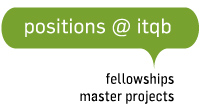[Seminar] A multiscale computational approach: Insights into the reaction mechanism of the double cubane cluster containing protein
Maria Andrea Mroginski, Technische Universität Berlin
| When |
17 Oct, 2025
from
11:00 am to 12:00 pm |
|---|---|
| Where | Room 2.13 |
| Add event to your calendar |
|
Title: A multiscale computational approach: Insights into the reaction mechanism of the double cubane cluster containing protein
Speaker: Maria Andrea Mroginski
From: Technische Universität Berlin
In the intricate realm of biological systems, electron transfer pathways play a central role in various physiological processes, ranging from energy transduction to enzymatic catalysis. Understanding the precise routes of electron flow within proteins is crucial for unraveling the underlying mechanisms of these essential biological functions. In this presentation we will focus on the prediction of electron transfer pathways in the Double Cubane Cluster Protein (DCCP) coupled with its ATP-Reductase (DCCP-R) using various distinct computational approaches. DCCP is a recently discovered enzyme that catalyzes ATP driven reduction of small molecules, otherwise only reported for nitrogenase. [1] [2]
While DCCP harbors two 8Fe9S cofactors, the ATP-reductase holds a 4Fe4S cluster that is responsible for transferring electrons to the DCC catalytic site upon ATP binding. These cofactors are highly coupled spin systems that require a multi-determinate-based approach to describe properly their complex electronic structure. In this work we use a computational cheaper alternative, the Broken-Symmetry Density Functional Theory (BS-DFT) which provides a single-determinate broken symmetry solution to the multi-determinate problem [3] and combine it with classical force fields in a hybrid QM/MM fashion to address the complexity of the protein matrix.
[1] Elghobashi-Meinhardt, N., Tombolelli, D. and Mroginski, M.A. (2021) Catalysts 11, p245
[2] Jeoung JH., Nicklisch, S. and Dobbek, H. (2022), PNAS 119.
[3] Noodlemann, L.(1981) , J. Chem.Physics 74, p5737







